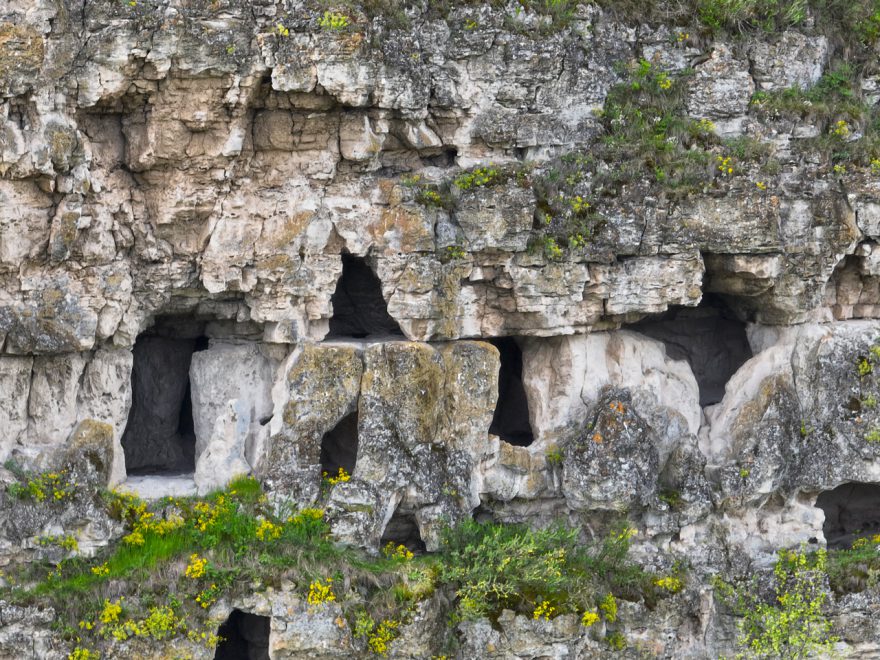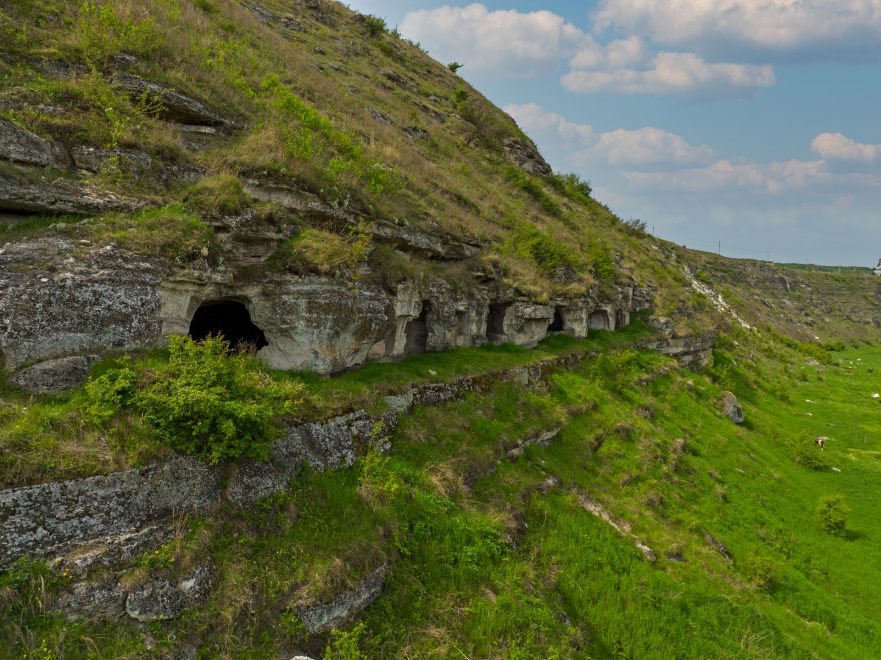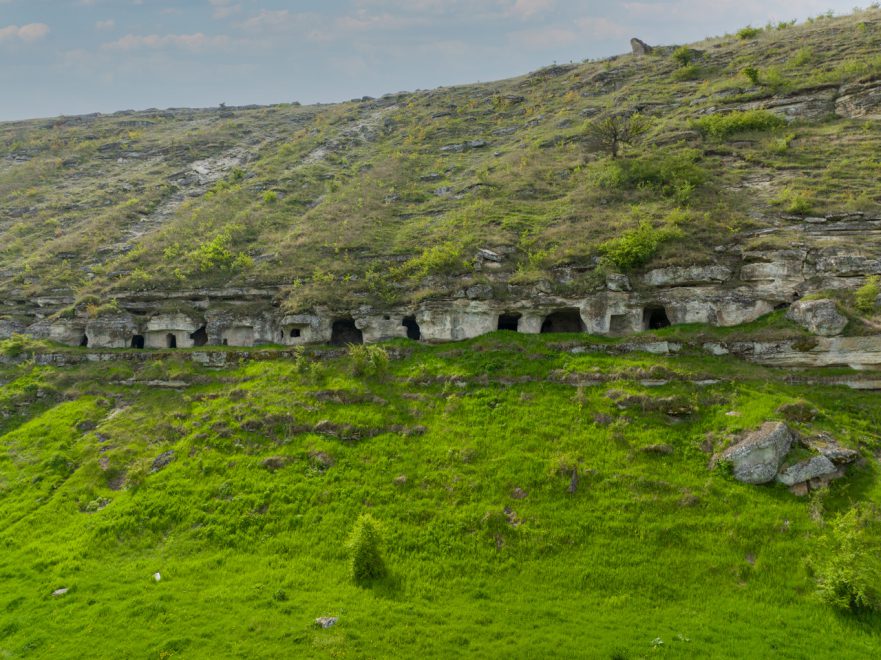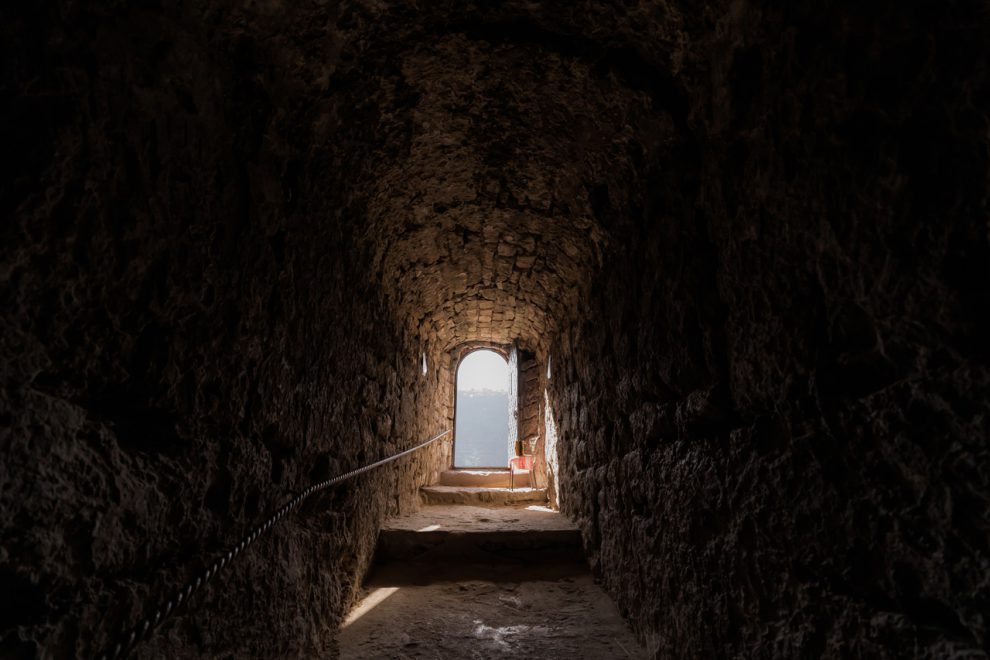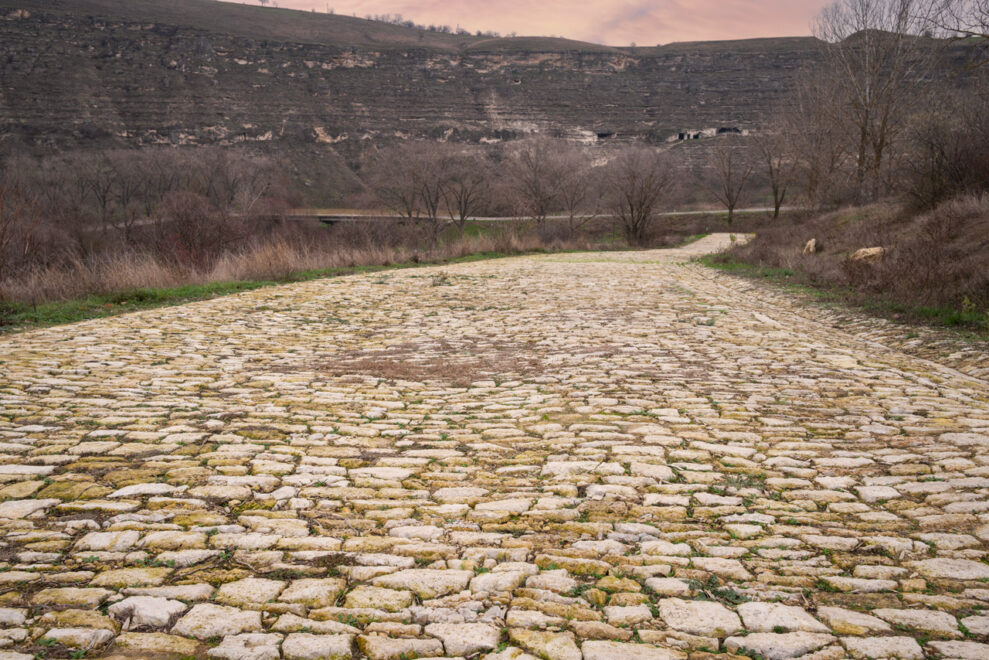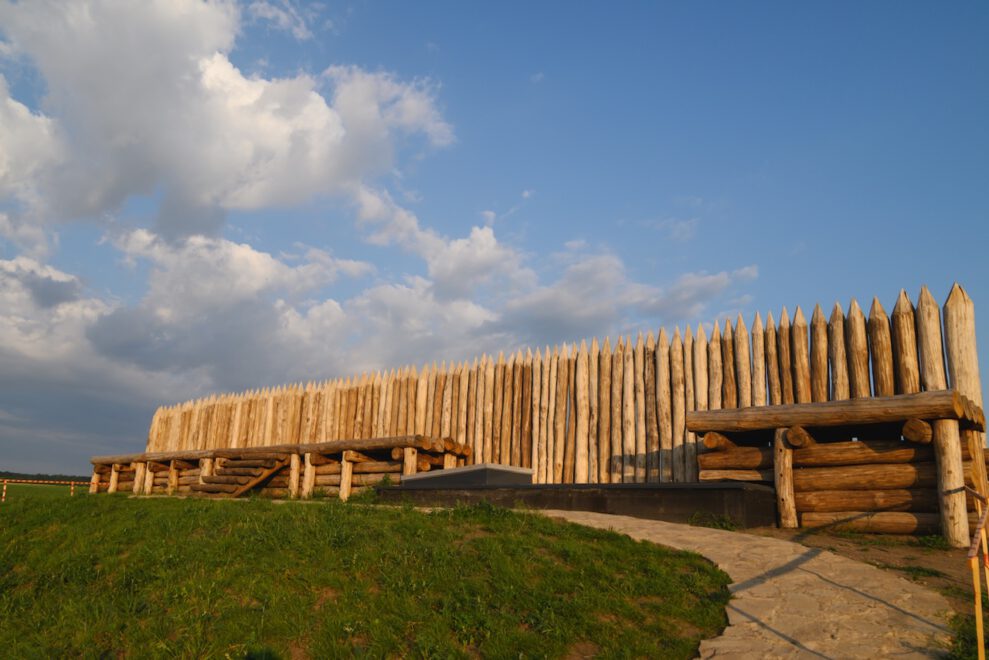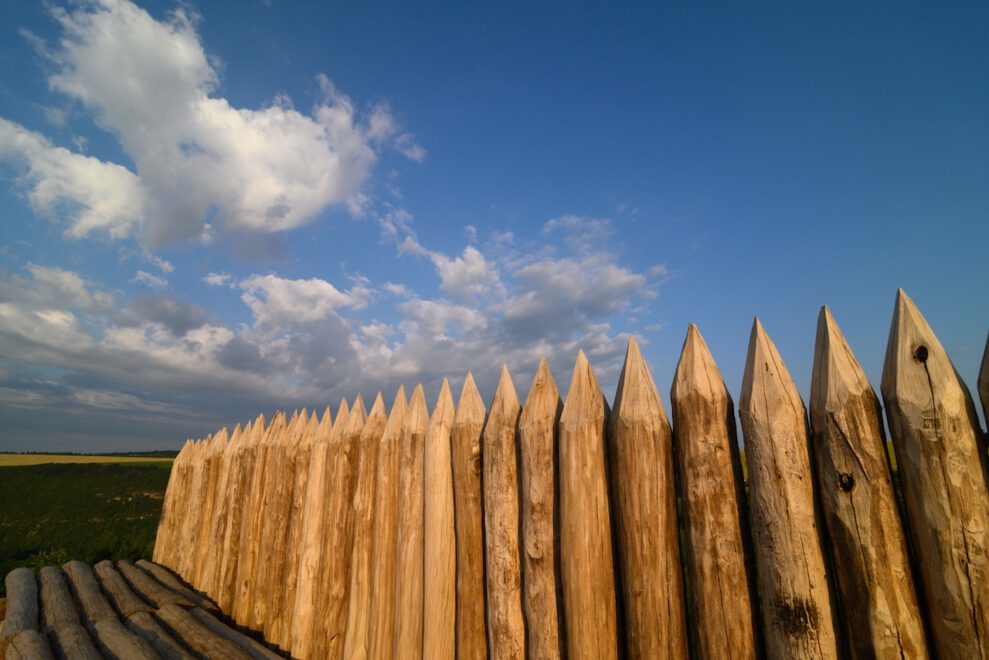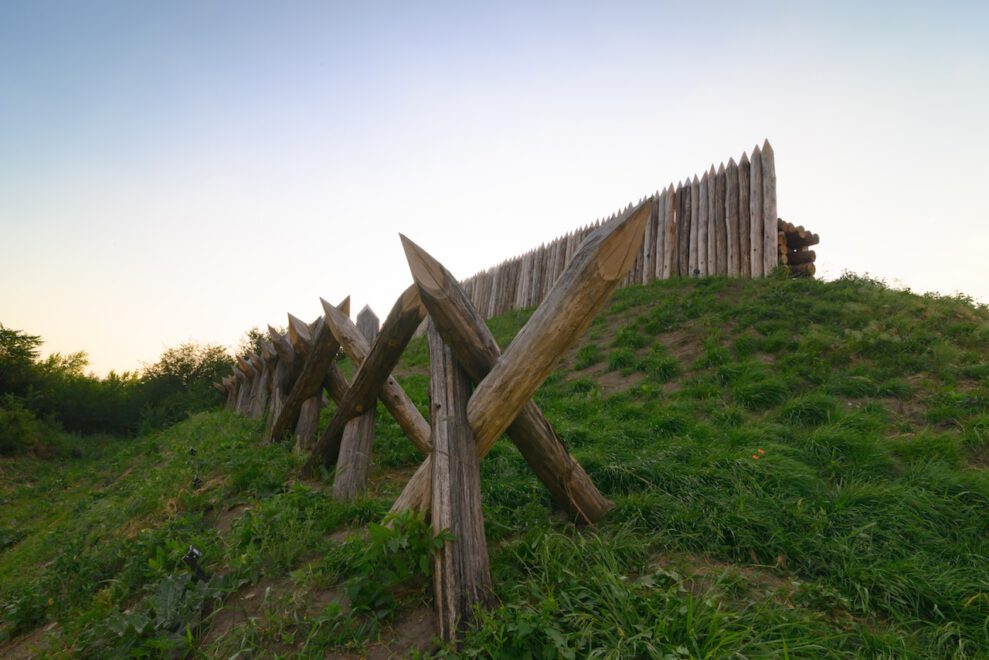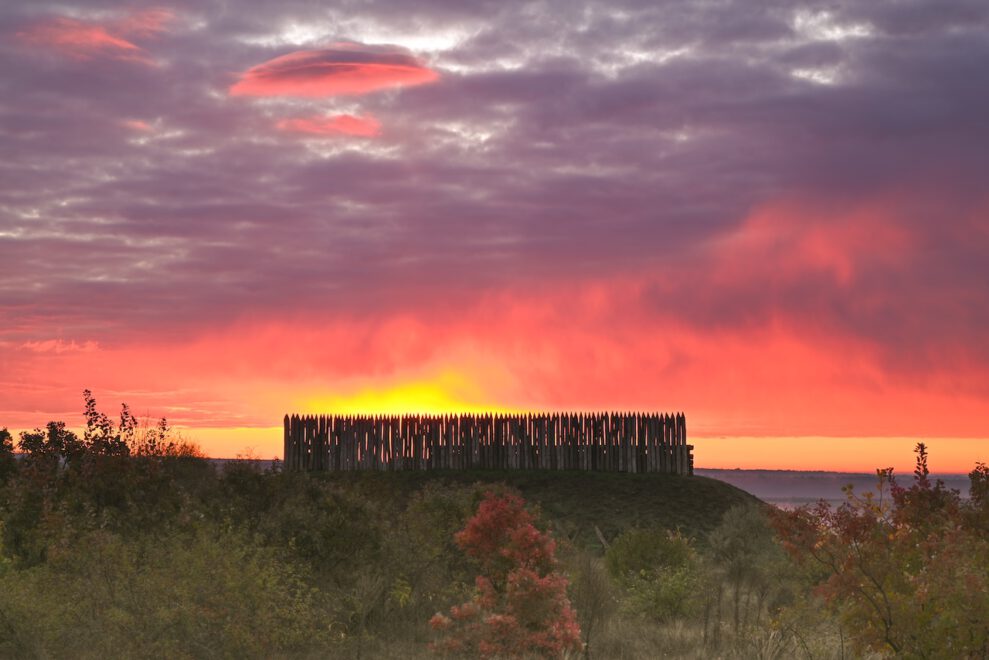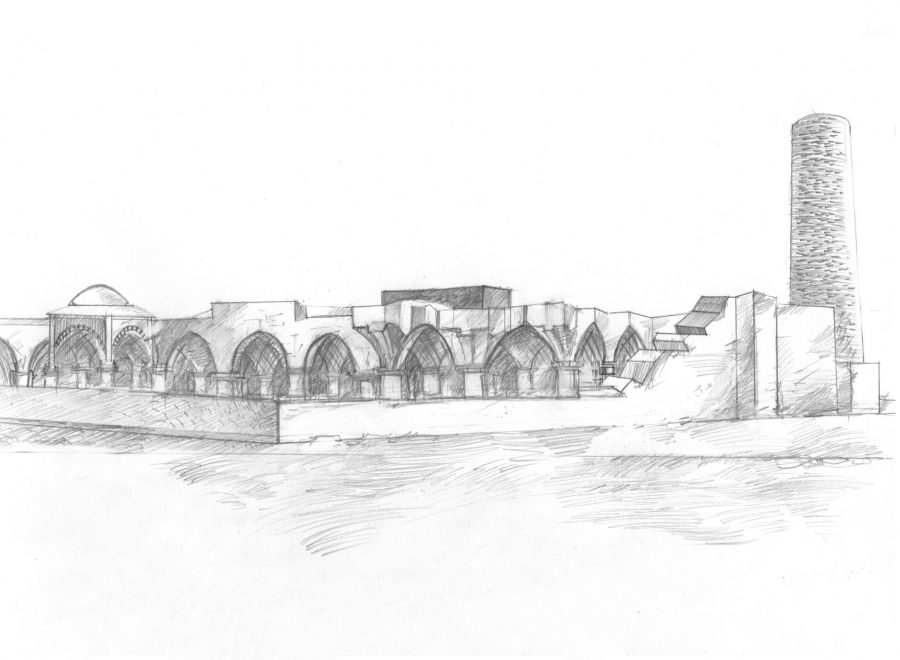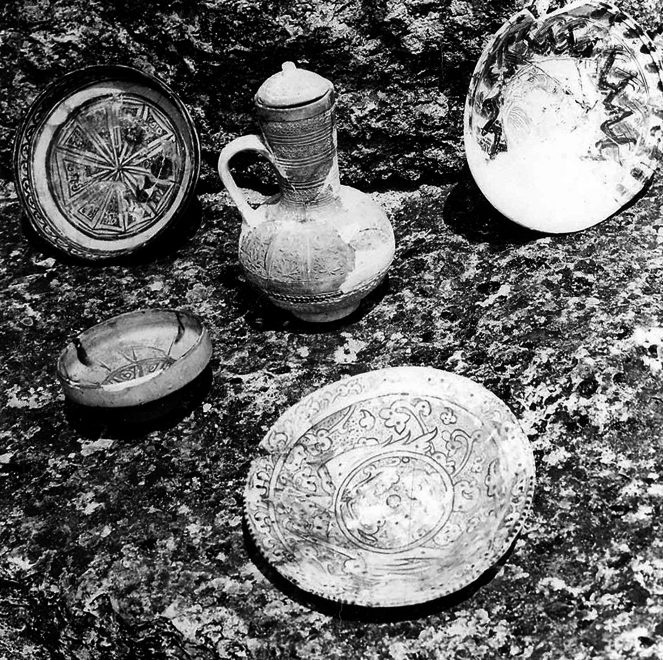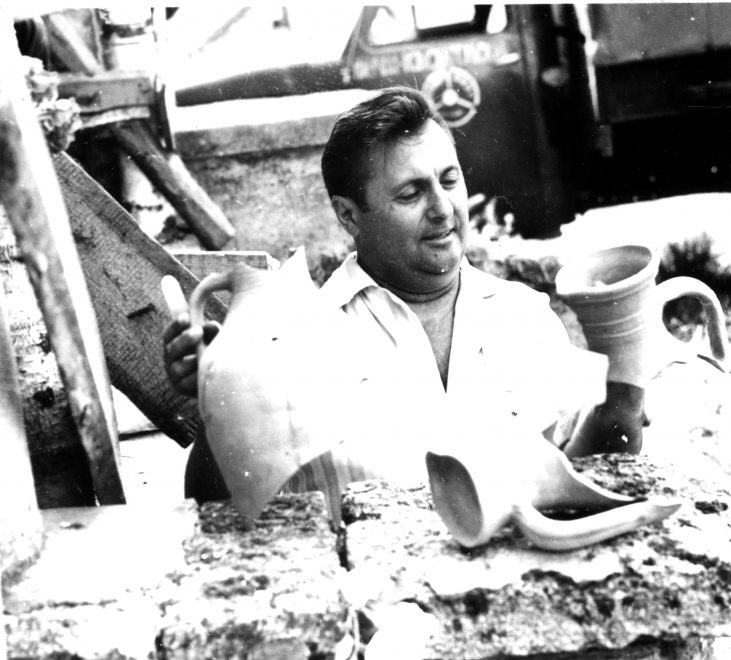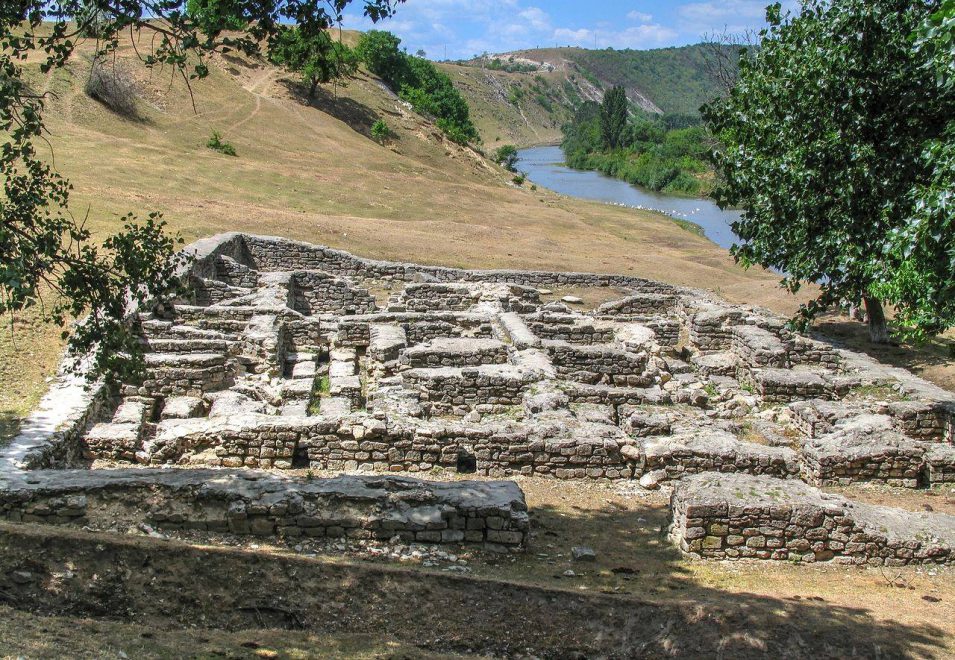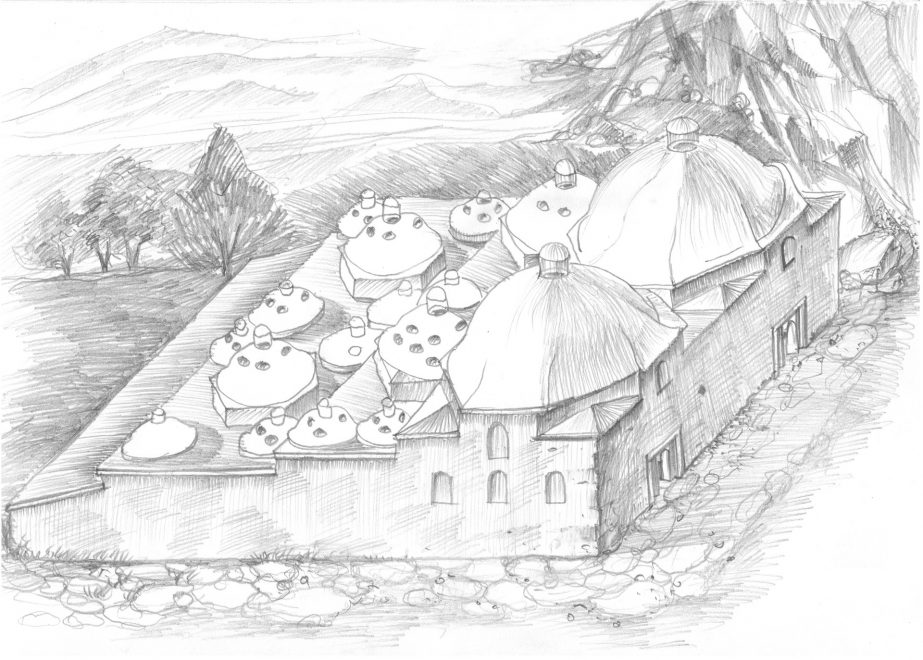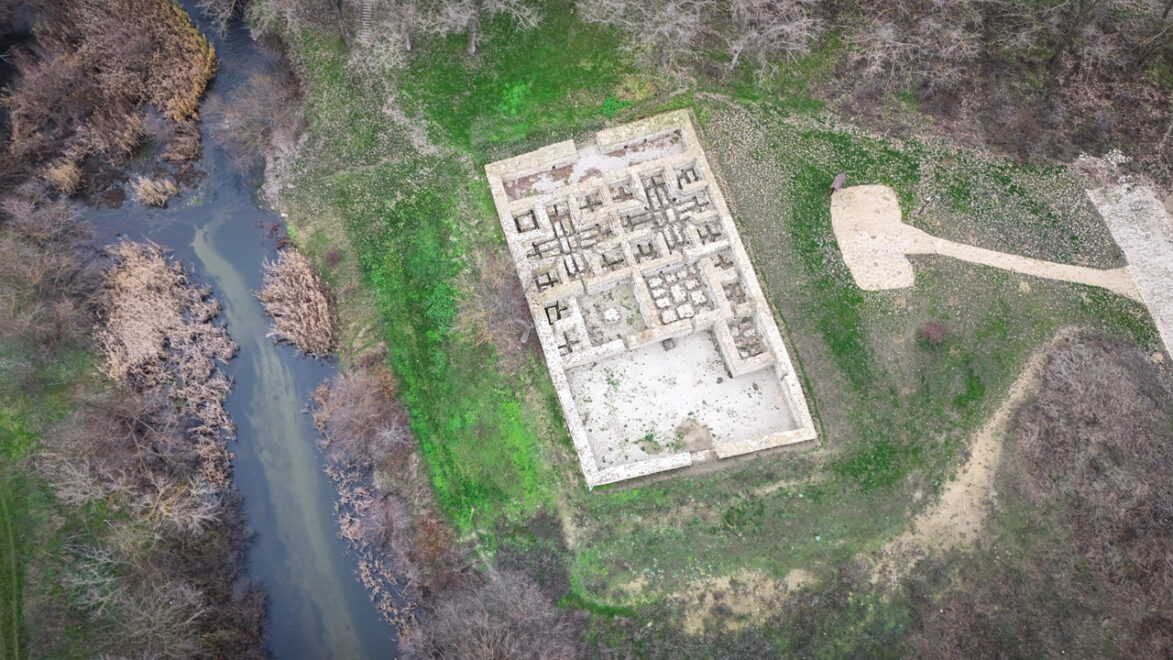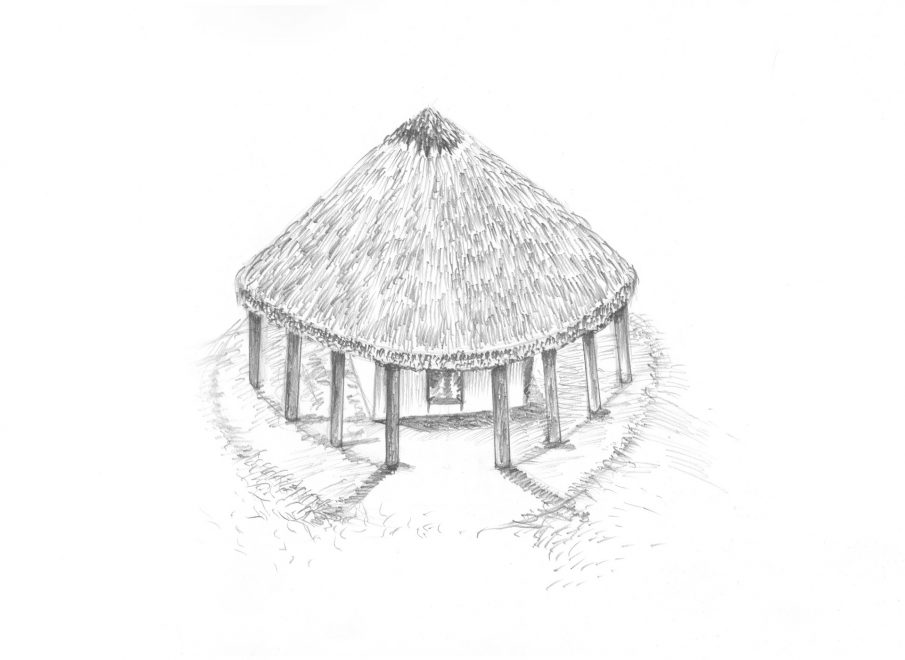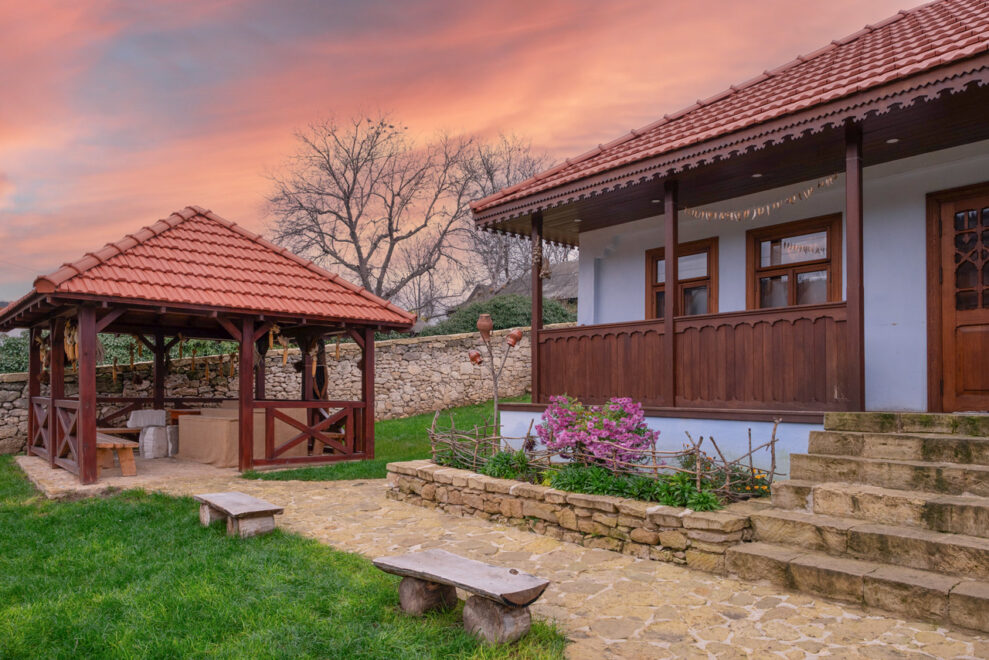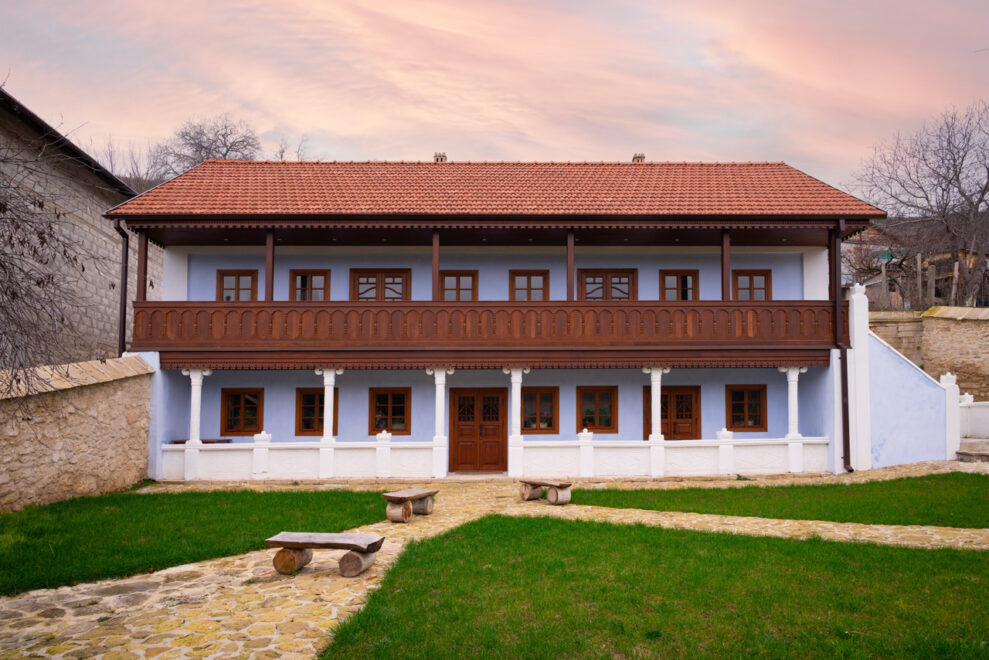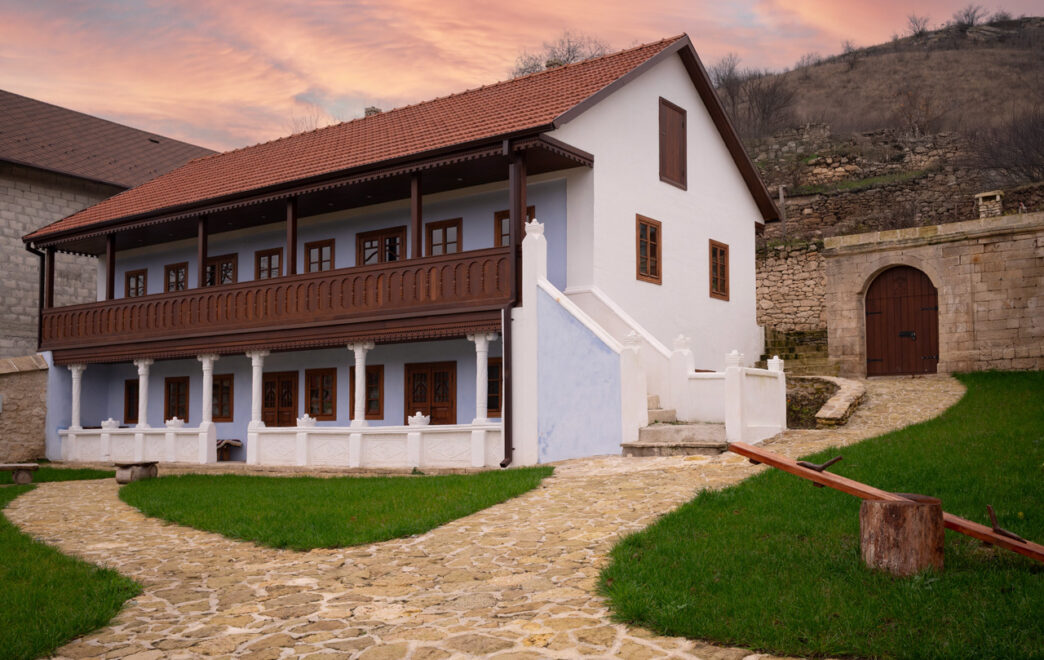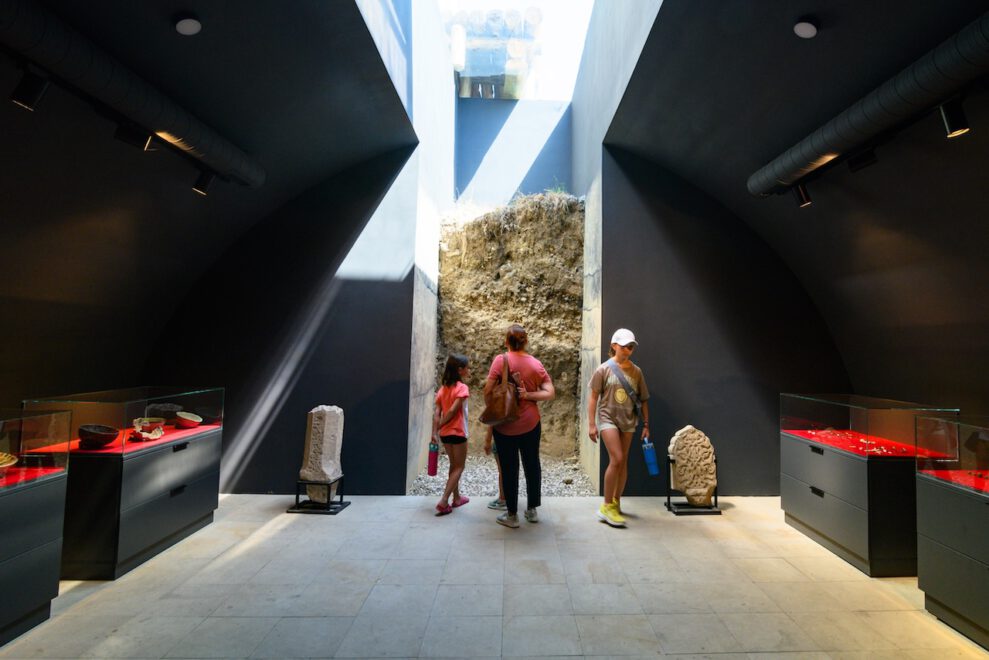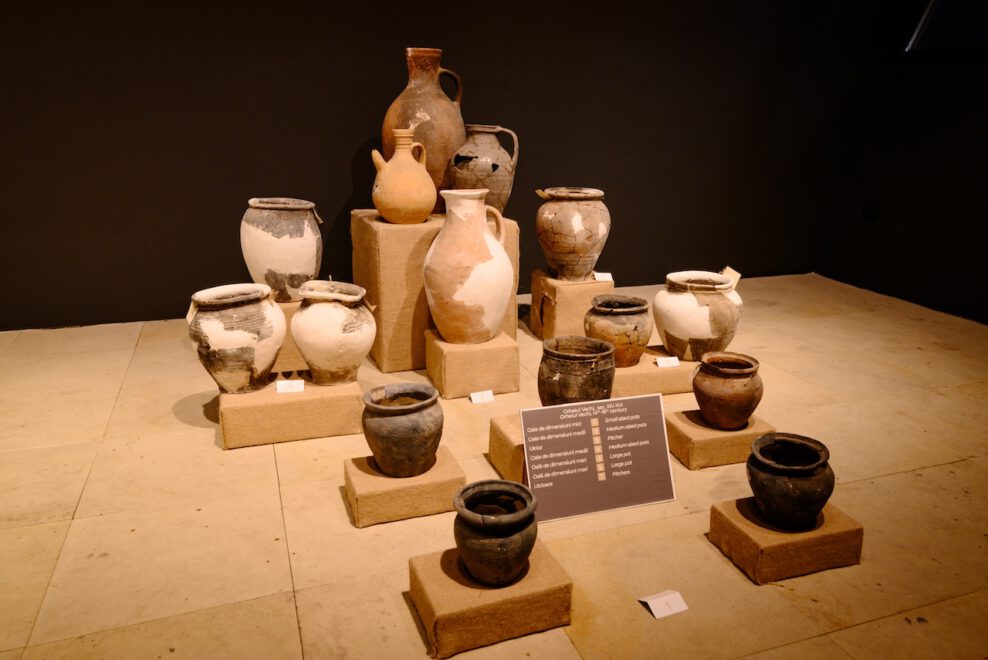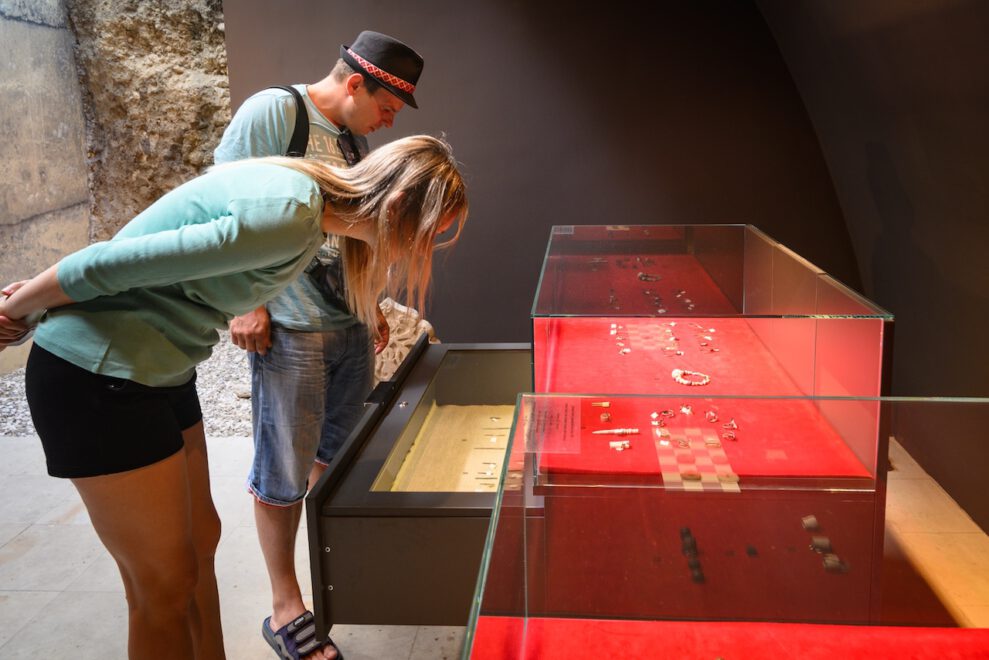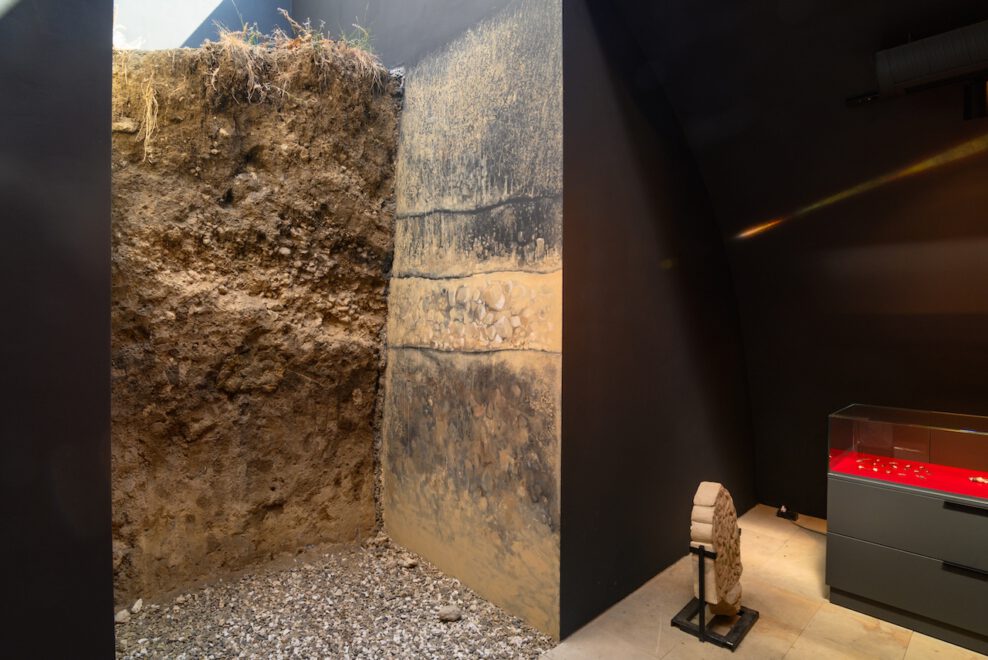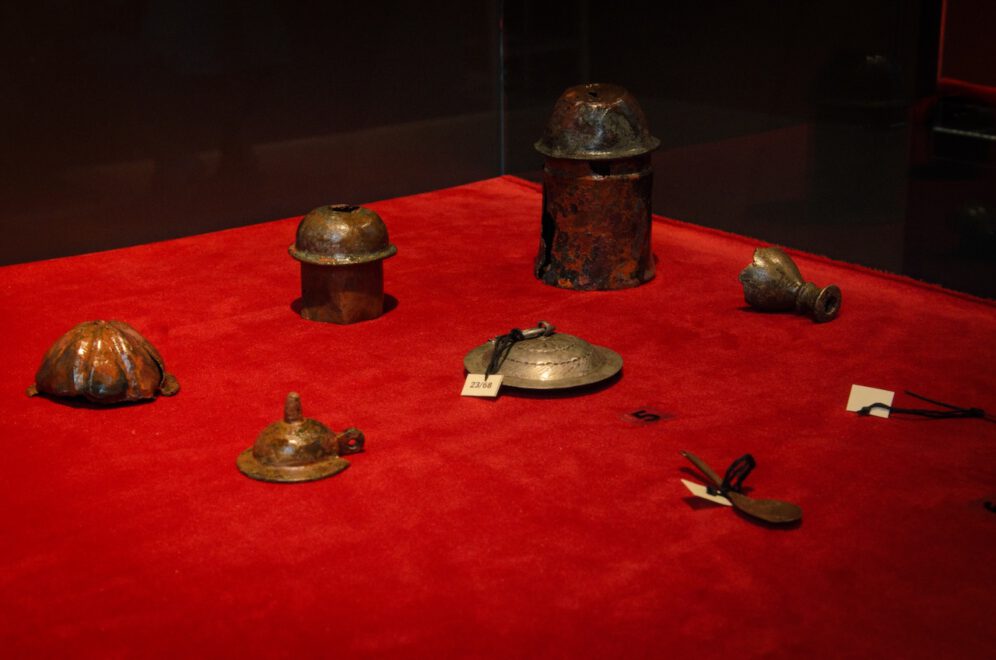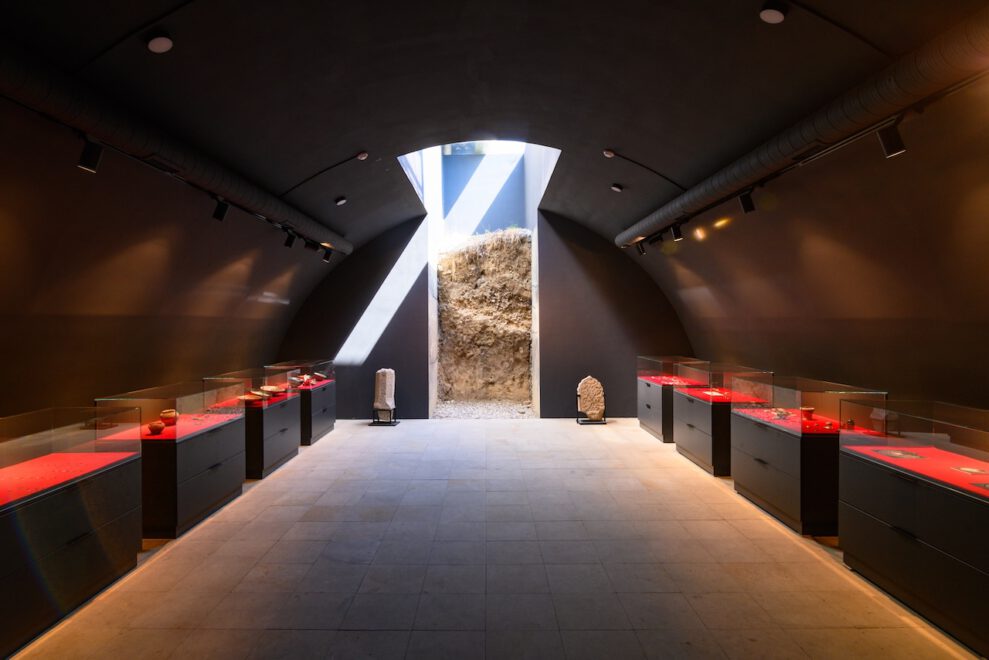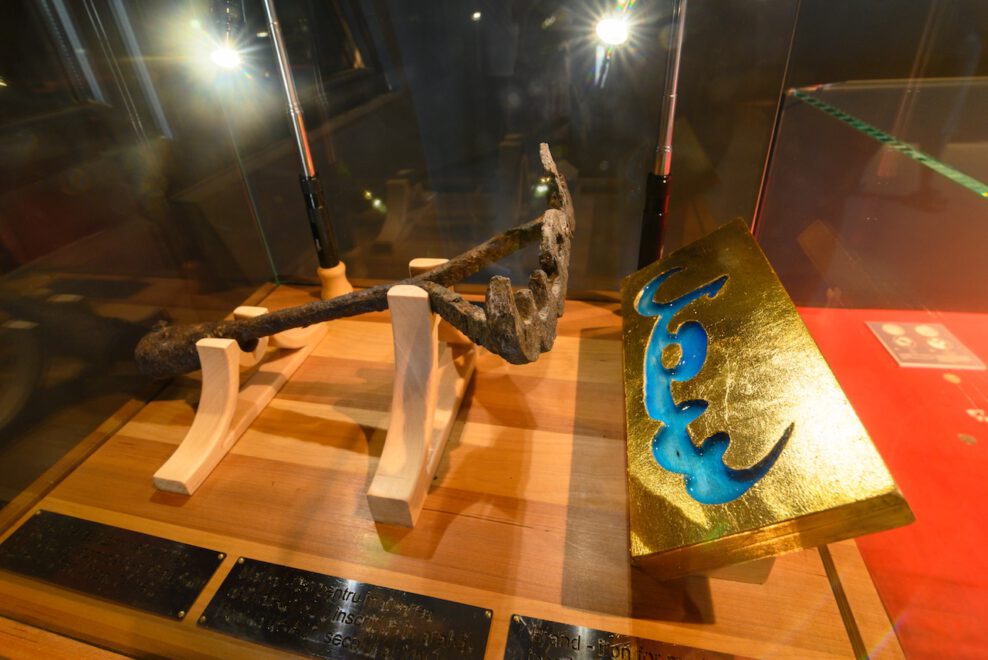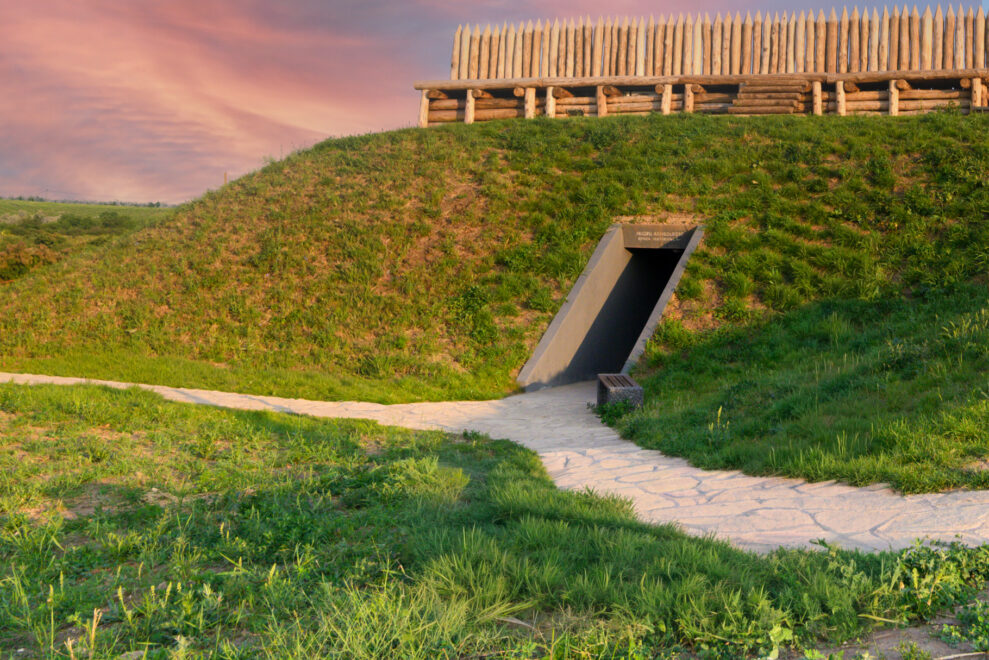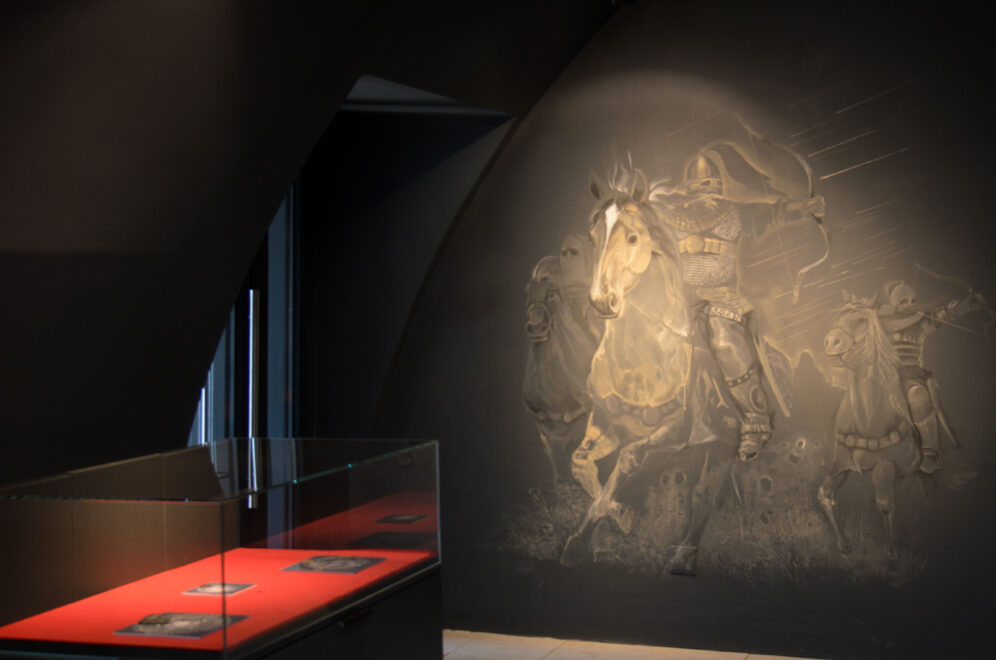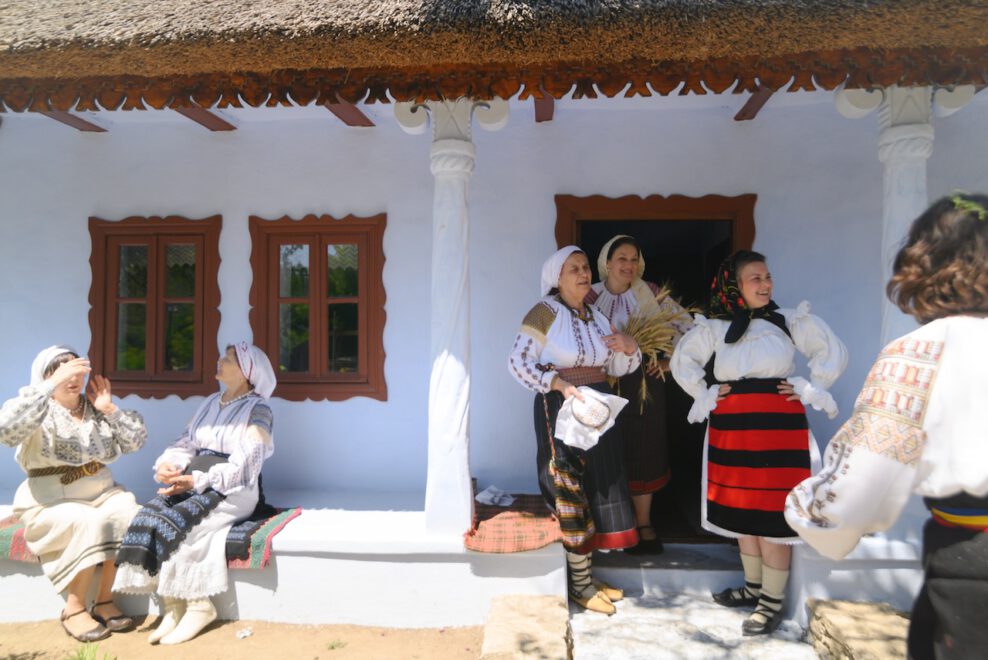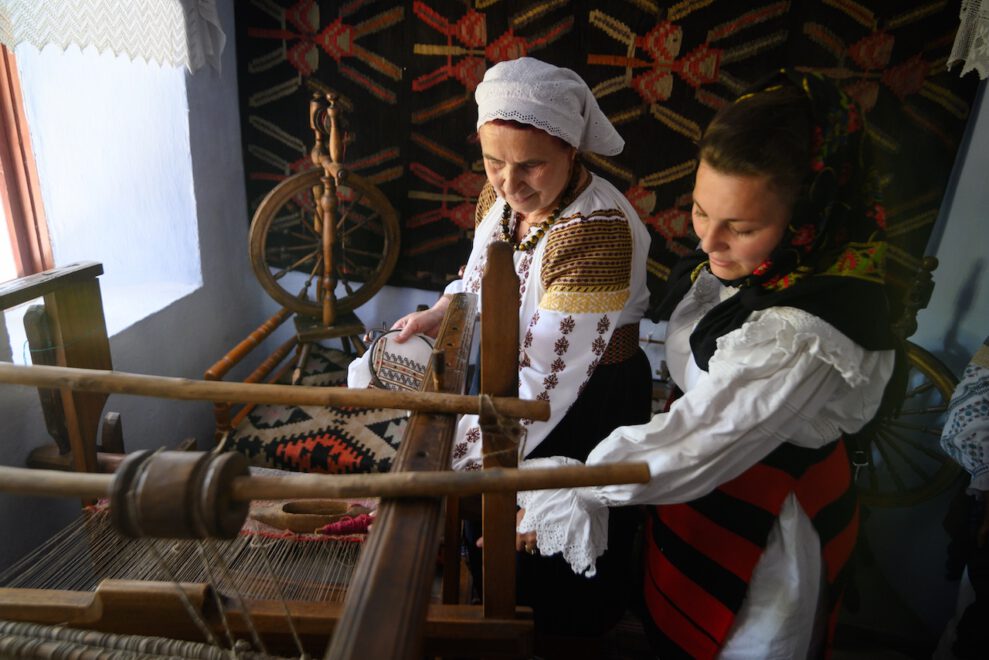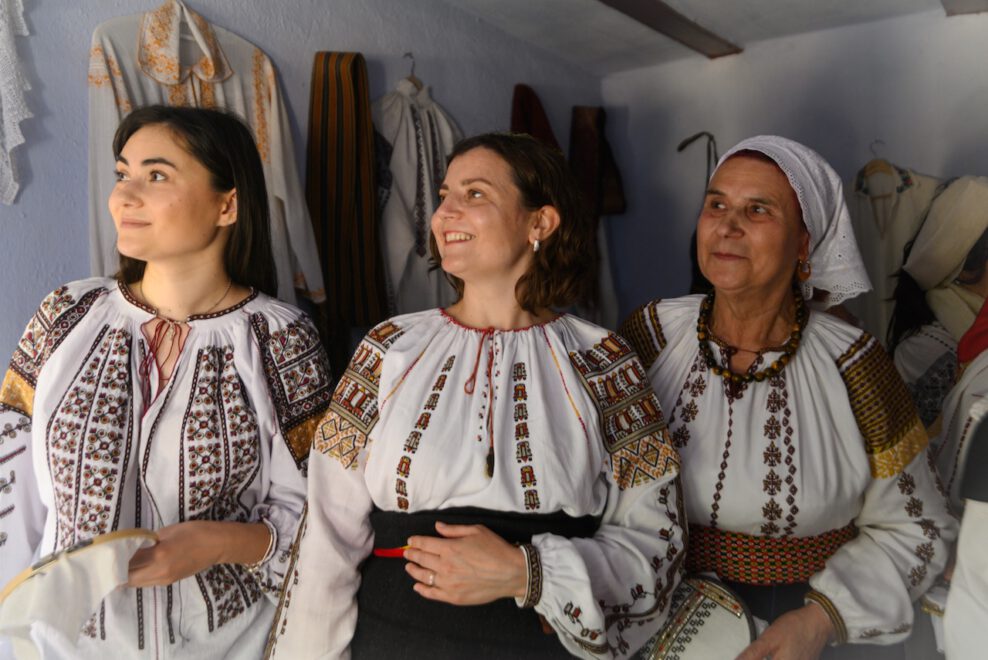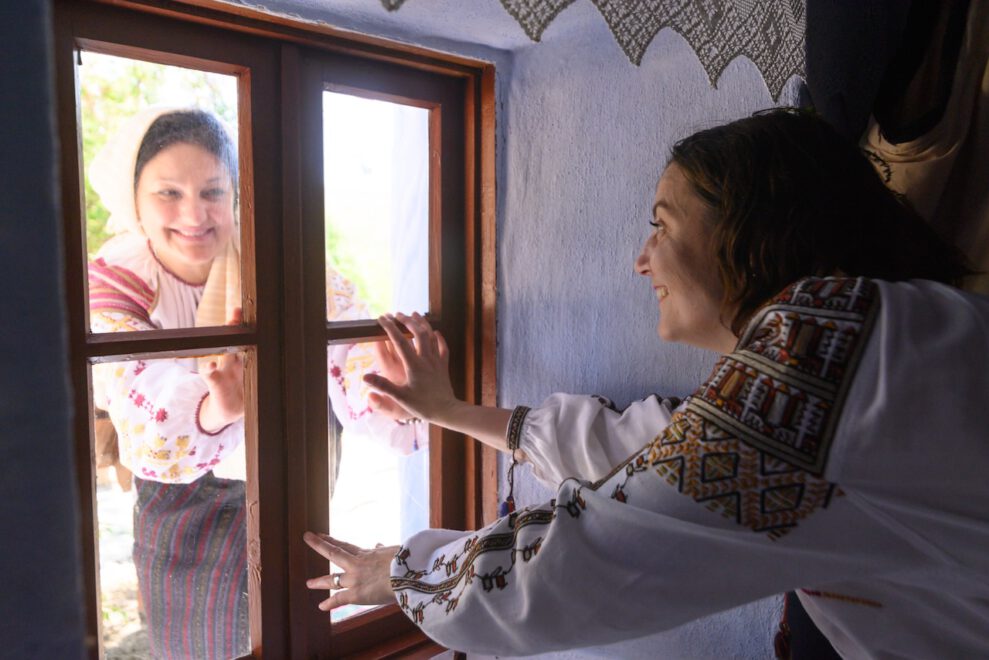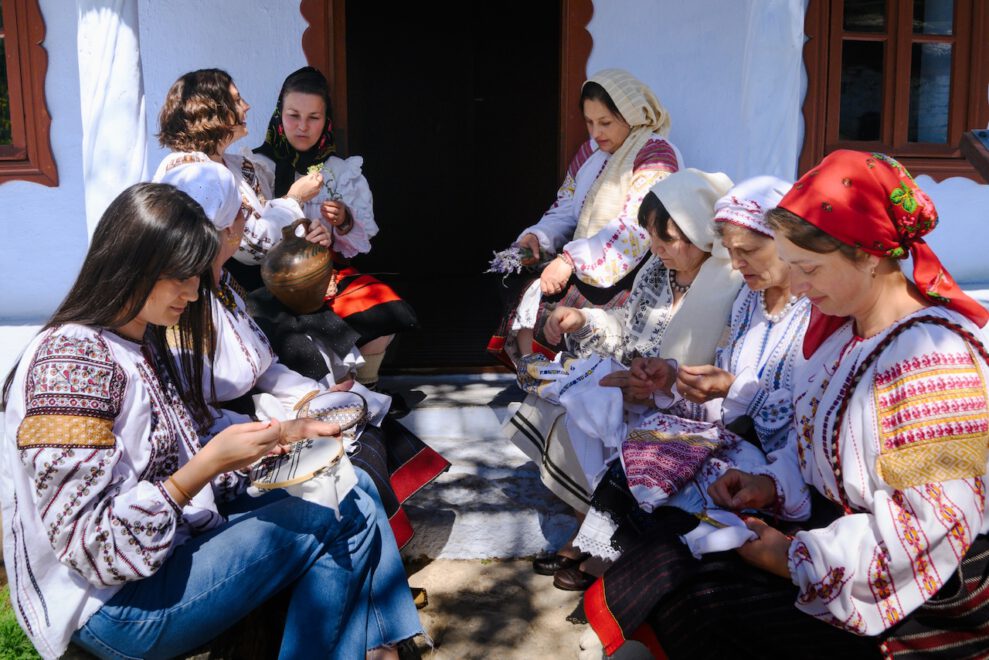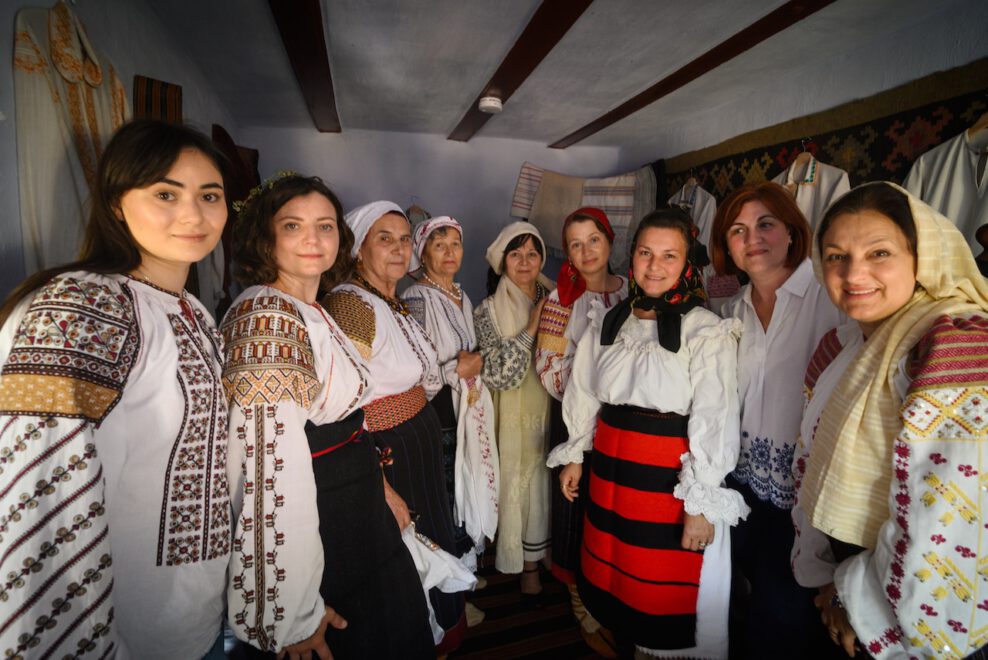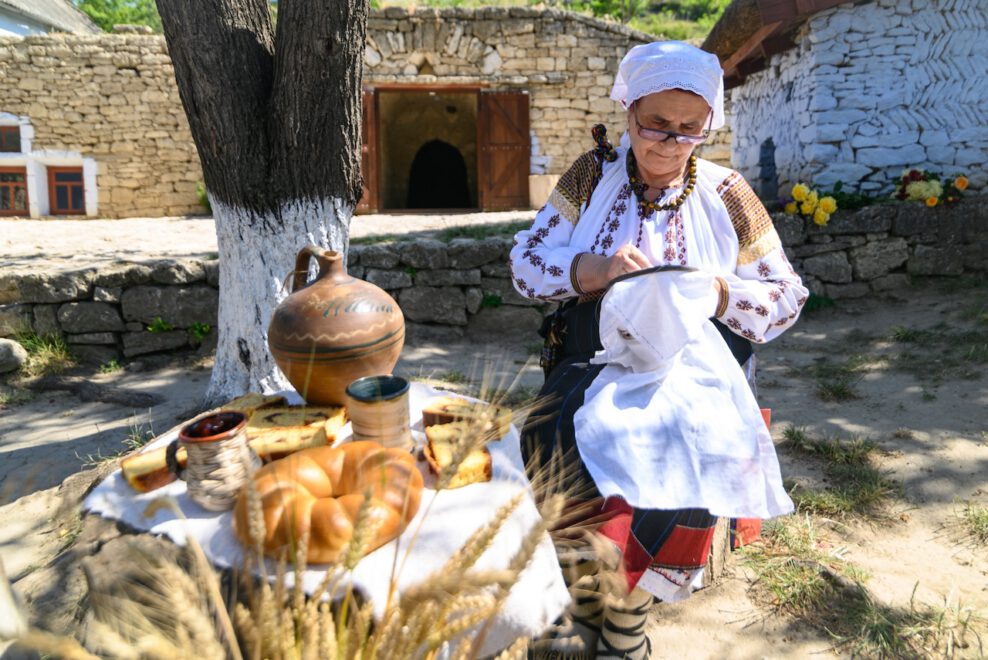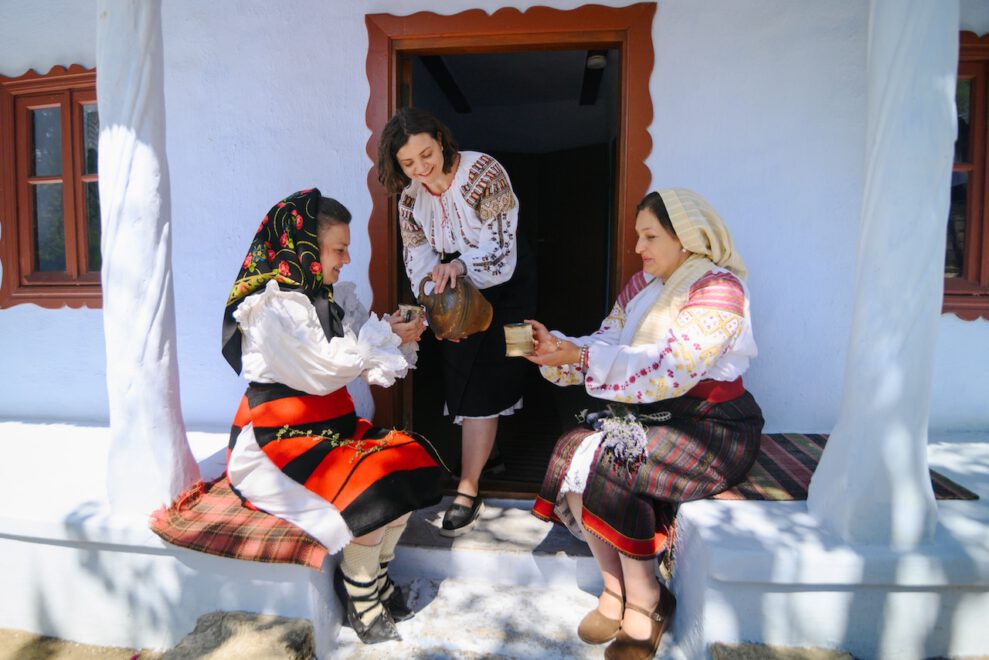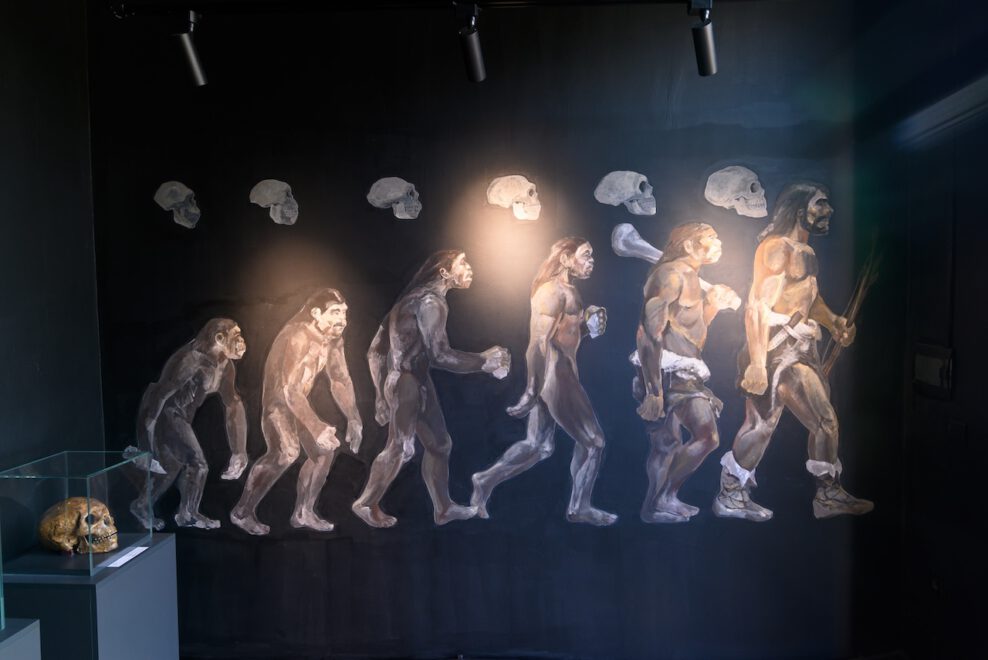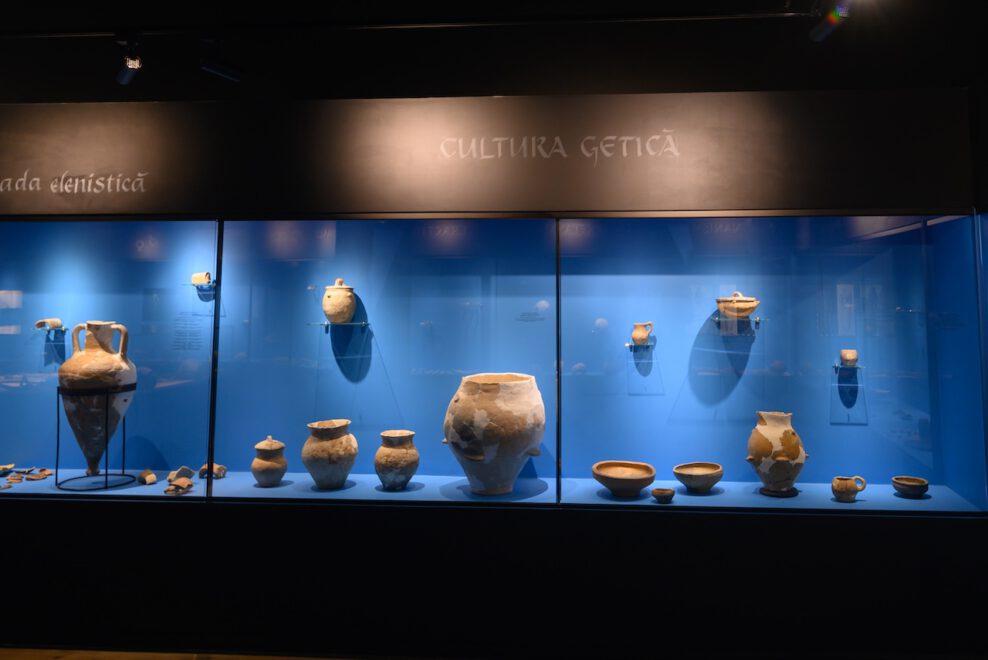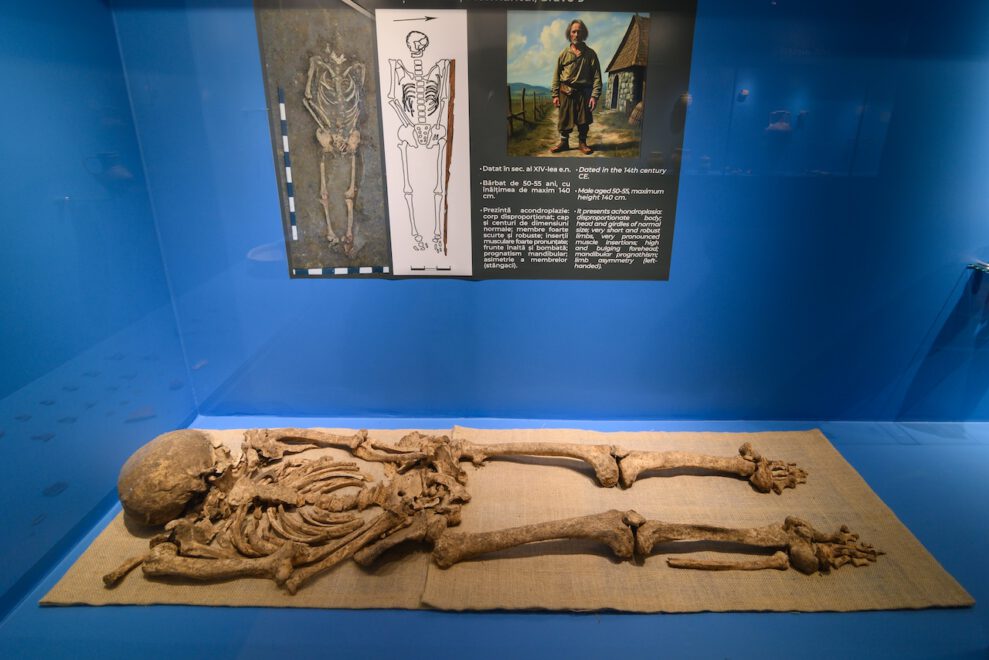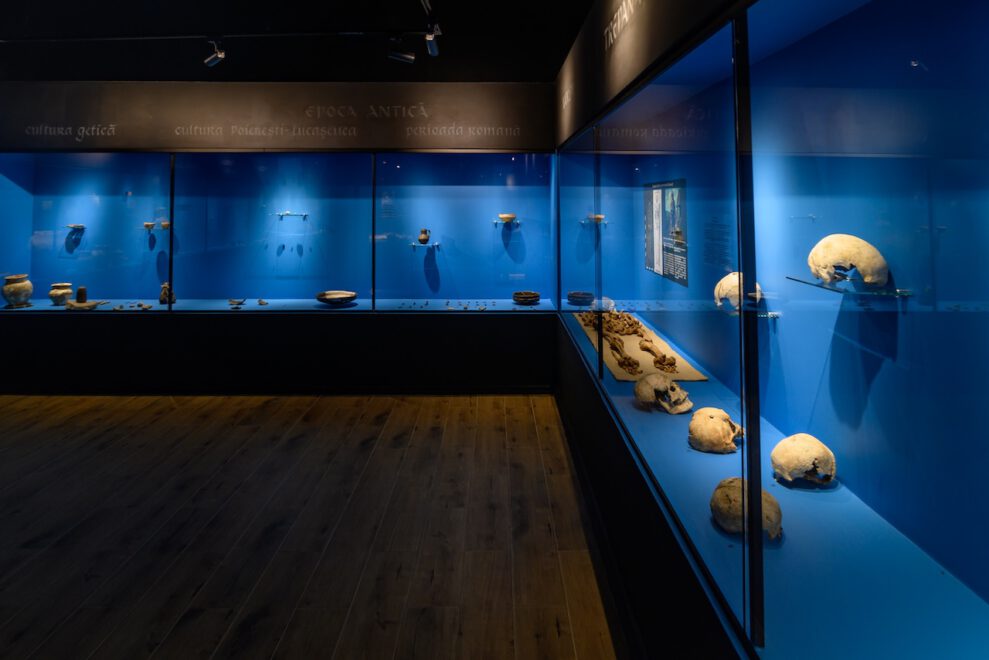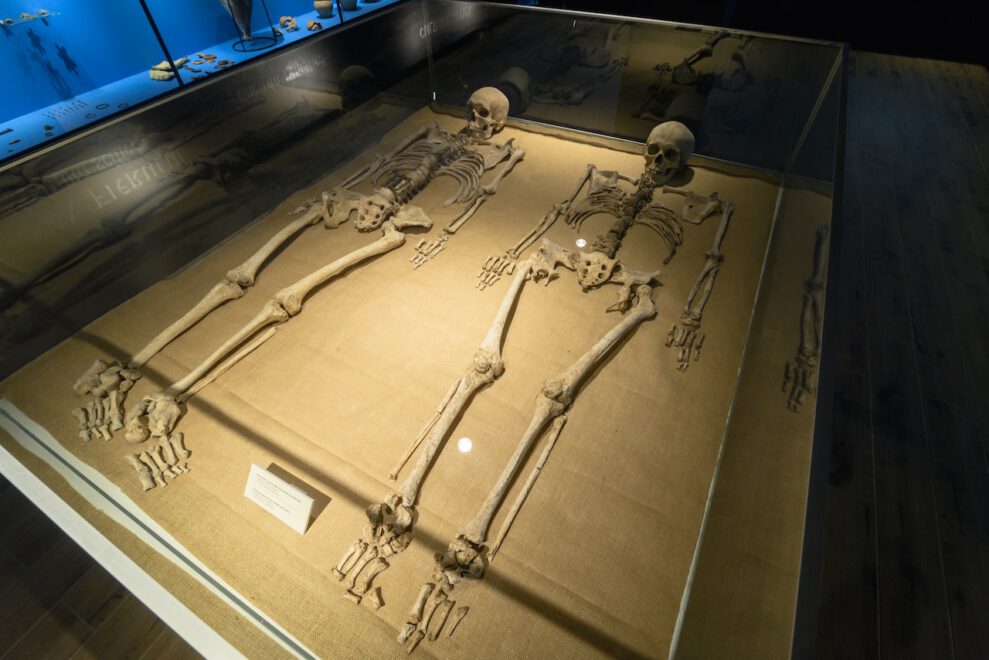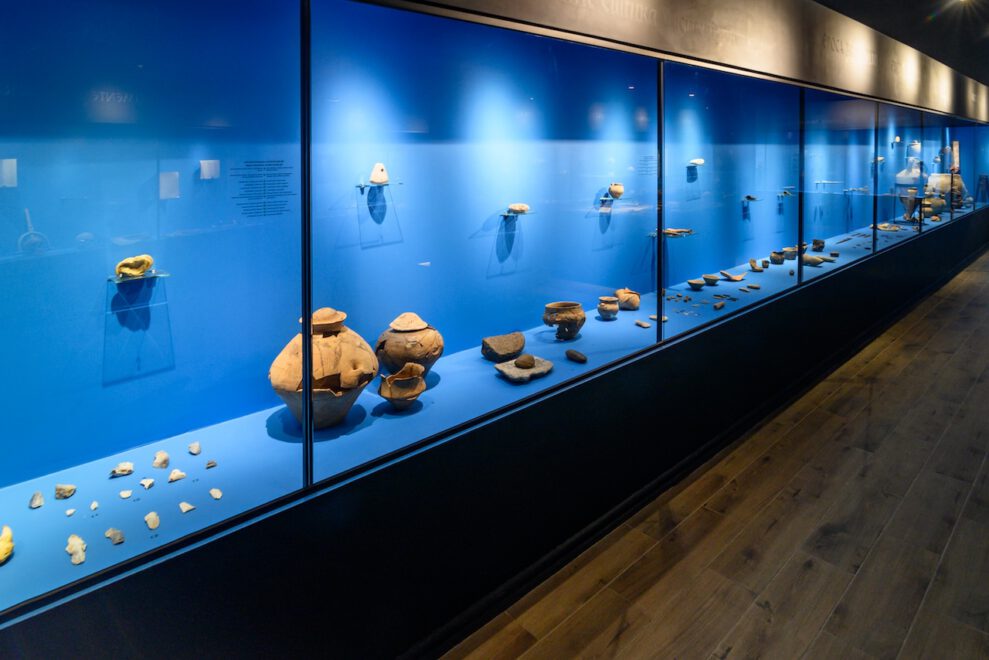Cultural
Heritage
Orheiul Vechi’s (Old Orhei) historical and cultural importance is shown through its collection of ancient archeological sites, monasteries and monastic complexes, medieval historical sites, and museums located on its territory. Together, these historical sites provide visitors an opportunity to learn about the layers of history, civilizations, cultures and peoples who lived in this area from prehistoric times until the present.
The Monasteries and Churches of Old Orhei
Orheiul Vechi is a very unique place with its cave churches and monasteries carved into the natural limestone ridge and cliffs above the Raut River. The Old Orhei cave monasteries provided a safe place for monks to worship and live for hundreds of years.
Visitors have an opportunity to learn more about this religious and cultural heritage by visiting one or several of the cave monasteries and churches. The Peştera cave monastery is most convenient to visit as it is located above Butuceni village, but we also encourage you to explore a little further and visit the other cave monasteries in the area.
The Monastery of the Birth of Virgin Mary
This Monastery of the Birth of Virgin Mary is located in Butuceni village and dates back to the 15th- and 16th centuries when there was a little church made from wood at the site of the current building. The work of the monastery is closely linked to that of the Peștera (the Cave) hermitage. Over the course of the next three centuries, there is no evidence of the activity of the hermitages in the area.
By the end of the 19th century. the monastic life in the region began to be revived. In 1905 the Monastery of the Birth of Virgin Mary was sanctified and reopened. However, after the establishment of the Soviet regime, the Monastery of the Birth of Virgin Mary, including the hermitage of the cave, was converted into an open air museum.
During the Soviet regime in 1947, the inventory of the monastery’s books and icons were granted to monasteries in Ukraine. In 1968, the bells were also taken out and replaced with gas bottles. The current bells were recently brought from Russia. The current monastic community was officially registered in 1996 and services began to be celebrated there in 1998.
How to visit the monastery:
This is an easy destination to get to, located on the tip of the headland Butuceni. Just follow any path up the hill from the village and you will reach the monastery.
See location on mapCave Monastery of the Burgrave Mășcăuți-Albu
This cave complex hermitage is located to the south of Butuceni village and across the street from the Monastery of the Birth of Virgin Mary. The period of its development and prosperity is between the 15th and 18th centuries, but it was severely damaged by several earthquakes. In the 20th century, due to an explosion in the compound and it already being weak, the hermitage was destroyed almost in its entirety.
Currently, about 20 different cave type monastic cells of the structure across four or five levels have been identified at an altitude of 70 to 80 meters above the water level. In the aftermath of the earthquakes that occurred during the last few decades, all of the access roads to the hermitage had been destroyed. Because of the danger in the greater the area of the former monastery of the Foreman Măşcăuţi-Albu, access to tourists is limited.
How to visit the hermitage:
Because of the danger in the greater the area of the former monastery of the Governor Măşcăuţi-Albu, access to tourists is limited.
See location on mapThe Hermitage of the Governor Bosie
The Hermitage of the Governor Bosie is a cave monastery and church built into the limestone ridge about 15 meters above the Răut River. It consists of a church dedicated to Saint Nicholas and ten monastic rooms or cave cells. The church and the cells to the west of it are lined up along a narrow terrace, about 55 meters long. The room of the cave church is the product of at least three stages of modeling its interior space. Initially, there were two or three rooms here, possibly also with liturgical joints, but with a different spatial arrangement from the current one. In a second stage, the merging of these rooms into one took place, already with clear church joints. The formal characteristics of the portal (arched termination supported by small “shoulders”), obviously influenced by the wall architecture of the time, allow the conclusion that its execution and, implicitly, of the cave church in the forms we see today, took place. not earlier than the end of the 16th century to the beginning of the 17th century. This is when influences of South Carpathian and Levantine origin began to penetrate the architecture of Moldova. The third constructive stage in the history of the monastery is related to the name of the parish priest of Orhei: Bosie. The basic constructive intervention by Bosie within the monastery that was completed in 1665 referred to the substantial descent, by about 30 cm of the level of the terrace, the church of St. Nicholas and some cells. On the exterior walls of the church were preserved 10 inscriptions (partially or completely) that are testimonies from different periods of its existence.
During the archeological research and excavations from 1999-2001 on the terrace in front of the church and the first rooms to the west of it, five tombs were discovered that have preserved the actual burials. These are dated according to the ceramic remains to the seventeenth century. There are three burials of adults, most likely the founders of the monastic settlement, and one burial of a child. Another burial, also of a child, was found inside the cave church. Most likely, they were children of the founders of the monastery. In the last part of of the 18th century, the monastic community of this establishment was dissolved. The likely reason is that they were irreparably affected by one of the wars or by an epidemic that plagued the region at that time.
How to visit the hermitage:
The trail to the cave monastery is on the bridge in the village of Trebujeni, on the left bank of the Raut River in the direction to Butuceni. At a distance of about 1.5 km away from the cliff you will see the hermitage of the cave. The access there is possible, but you need to be careful due to its high location.
See location on mapOld Orhei Cave Monastery Peștera
The Old Orhei cave monastery “Peştera” located at the northern edge of Butuceni village is one of the main attractions for visitors to Orheiul Vechi. The monastic complex dates back to the 15th century and consists of two basic units: the church and the body of monastic cells. Above the monastic complex, on the surface of the Butuceni promontory (ridge) is installed a stone cross (17th-18th centuries) and Bell Tower (1820).
Inside the cave, the Orthodox Church is located east of the cells. It is built on the basis of older rooms, the traces of which are very well projected in certain places. It is arranged along the slope, being composed of the following compartments: Altar, Naos, Pronaos, Porch and an access Gang. The length of the Church is 14.7 m, and the width is 4.0-8.0 m, the height is 2.6-3.5 m meters. The monastic cell complex of the “Peştera” monastery where monks lived and worshiped for centuries is located west of the Church. It consists of a central hall with 12 side rooms-niches. The monastic complex functioned in several stages between the 15th-16th centuries and then at the beginning of the 19th century in 1816.
Between 1816 and 1904 the monastery was the parish church of the village of Butuceni and later it operated only during the Easter and Christmas celebrations. In 1946, the Peştera Church was closed, later being transformed into a collective farmhouse depot during the Soviet Union. In 1968 it was under the management of the Orheiul Vechi Museum Complex. In 1996 the monastery church was restored by the new monastic community founded in Butuceni.
How to visit the cave monastery
Climb down the stairs into the Peştera Cave Monastery and Orthodox Church from the entrance located near the Bell Tower on top of the ridge above Butuceni village. You can visit the orthodox church and then continue out of the cave to walk along the edge of the cliff for a beautiful view of the limestone ridge and cliffs and Raut River valley below.
See location on mapOld Orhei Archeological Sites
Orheiul Vechi’s long and vast history of civilizations and peoples living in the area from prehistoric times to the present mean that the territory is full of ancient and medieval archeological and historical sites.
Although not much remains today from many of these historical sites, archeological excavations and research have been done at many of these sites to provide us with an understanding of the military and political role that Old Orhei played and the people who ruled and lived here over the course of thousands of years.
The Cobblestone Road
The cobblestone road was an infrastructure construction dating back to the medieval period, most likely to the years of the Tatar-Mongol occupation in the 14th century. The road served as an access route connecting important Tatar edifices, including the palace, the mosque, the caravanserai, and the Tatar bath.
The road was built from carefully arranged stone blocks, bonded with clay and sand mixtures. It also featured a drainage channel, which demonstrates the advanced knowledge of medieval road construction and communication infrastructure.
Today, a significant portion of the cobblestone road is either covered by soil or lies beneath the modern roadway leading to the village of Trebujeni.
Access to the Site
The medieval settlements are located in the immediate vicinity of the main road connecting the villages of Butuceni and Trebujeni, near the bridge between the two localities. The site is included in the list of points of interest along the hiking route “The Core of the Reserve”.
See location on mapThe Defensive Rampart of Orheiul Vechi
The defensive rampart at Orheiul Vechi is often associated with the time of Stephen the Great, though research shows that its origins go back to the period of Mongol occupation in the 14th century. Throughout the 14th–15th centuries, the system was modified and adapted to the needs of the community living in the area.
The fortification consisted of two earthen ramparts reinforced with wooden palisades and accompanied by adjacent ditches. These elements served to control access and create a defensive barrier around the settlement. In 1510, the wooden structures were burned during Tatar incursions, and in the following centuries the ramparts were affected both by human intervention and by changes related to the construction of the modern road.
The structure visible today at Orheiul Vechi is a reconstruction based on archaeological data. It illustrates how the medieval defensive system may have looked, helping visitors better understand the spatial organization and protective functions of the fortification during that period.
Opening hours
Monday – Friday 09:00 – 18:00
Tickets
Your access to the location is available by using the same ticket for entry to the reserve, without further payment.
See location on mapMedieval Mosque and Caravanserai
The architectural ensemble of the Medieval Mosque and Caravanserai were built during the Mongol domination between 1350-1365. The Mosque was a place of Muslim worship and the Caravanserai a place for the storage of goods for traders and caravans. The religious complex of the mosque consisted of: the enclosure protected by the stone wall, the portal or entrance to the mosque, the minaret or tower of the priests, and the mihrab which is the axis of the sanctuary. According to the Arabic inscription: “this mosque was built by order of the pious benefactor Alih..san.”
The Caravanserai was a rectangular building complex used for storing goods and hosting traders. Based on excavations and archaeological analysis, you can see drawings below of how the Medieval Caravanserai and Mosque looked when they were built and used in the mid-14th century.
How to visit the Medieval Mosque and Caravanserai:
The location of these medieval buildings is close to the main road which connects the villages Butuceni and Trebujeni. It is one of the points of interest list from the hiking route, the Core of the Reserve.
See location on mapThe Medieval Citadel
This fortress made from stone was built in the architectural style characteristic of the second half of the 14th century. The Medieval Citadel was the residence of the Mongul ruler between 1366-1369. The monumental complex was built in a typical oriental architectural style.
The Tatar Bath
Along with the founding of the oriental city Șehr the Geadid on the territory of Old Orhei by the Tatar-Mongols, there started to appear baths. Bath number II or the Turkish bath, is the largest of the three urban baths that were discovered in the archaeological excavations. Local tradition has maintained its intended purpose of a bath attached to the document of 1574, under the name of the “feredeu” (Hungarian – Turkish bath). The Tatar Baths was built in the medieval period (mid-14th century) by the Tatar-Mongols (the Golden Horde) after they settled in this area after conquering it in 1241. The Tatar Baths were an important element of the infrastructure of the city. The Tatar Baths are done in typical oriental Hammam construction, with a hypocaust system based on the circulation of hot air under the floor. It includes six basic rooms and 23 built-in sections that were used for heating, bathing, and other cleaning rituals.
The entrance to Tatar Baths is from the west where the street of the city passed and pointing to the passage above Rau Rivert with the tank and outbreak being on the other side. Each bathroom is equipped with compartments and similar to the Roman baths they have been conventionally called, tepidarium, caldarium and laconium.
How to visit the Tatar Baths:
The location of the Tatar Baths is near the entrance to the village of Trebujeni. This location is part of the points of interest list from the hike route called the Core of the Reserve.
See location on mapThe Ancient Geto-Dacian Sanctuary
This sanctuary dates back to the 4th-3rd centuries BC when the Geto-Dacian civilization lived on the territory of Orhciul Vchi. It is a cult construction of a circular type (diameter of 9 meters). It had the role of astronomical observatory and calendar. It was composed of a stone altar and 21 pillar holes, arranged in three consecutive circles with 3, 6 and 12 cavities.
The inner circle represents big weeks of 10 days each, the second circle represents small weeks of 5 days each, and the third circle represents months of 30 days each.
How to visit the Geto-Dacian Sanctuary:
The Geto-Dacian Sanctuary buildings are located in the area of Butuceni villagei, at the distance of a few hundred meters away from the Church at the top of the cliff of Old Orhei.
See location on mapThe Getae Fortifications of the Butuceni Promontory
The center of military and political administration of the geto-dacian fortress of the centuriesVII-II BC. It is located on the ridge of the promontory Butuceni,and from 1904, the orthodox Church, “The Holy Mary” is perfectly aligned inside of her. The citadel is equipped with a wall made of stone, and the waves of the ground, has the shape of an oval-oblong, with dimensions of 252 x 48 meters. It has been an important trade center of the ancient geto-dacians, that facilitated the exchange of goods with the Greeks on the rivers Nistru and Raut.
This archeological site represents a Getae defensive system from the 7th to 2nd century BC, consisting of two citadels and seven waves of land or defensive ditches. In the extreme parts of the promontory – or ridge – are the vestiges of three waves of defense (numbers 1, 6 and 10). In the central part of the ridge, near where the Church of the Nativity (1904) was built, the traces of a citadel and of some earth waves with adjacent ditches are preserved (numbers 2 and 5).
On the highest place of the promontory, to the east of the church, there are traces of a semicircular fortification of about 250 x150 meters, delimited by 3 concentric waves. The most visible vestiges of fortifications are: wave no. 10 (length – 364 m, height -3-8 m), ditch no. 3 (depth – 3 m) and the route of the citadel (width is 2 meters).
How to visit the Getae Fortifications:
The location of the Getae buildings is in the area of Butuceni village, at a distance of a few hundred meters away from the Church at the top of the cliff of Old Orhei.
See location on map
Museums at
Orheiul Vechi Reserve
Orheiul Vechi (Old Orhei) has two museums in the village of Butuceni that allow visitors to go deeper into the history and culture of the area. The Museum of Archeology and Anthropology to help visitors understand the area’s vast history and archeological findings from prehistoric times to the Middle Ages through different historical exhibitions. The Ethnography Museum located n a traditional Moldovan country house preserves the cultural and rural traditions of this area from the 19th to 20th centuries.
Together, these museums provide visitors with an opportunity to learn more about the different people and cultures who lived in Orheiul Vechi over the millennia.
The House of Craftsmen Museum
The “House of Craftsmen” Museum is housed in a rural dwelling built during the interwar period, in 1931. Over time, the building underwent certain interventions and adaptations characteristic of the postwar period; however, it has largely preserved its original structure, volume, and appearance, typical of a traditional rural household of the 20th century.
The building reflects the lifestyle of local communities in the Orheiul Vechi area, offering visitors an authentic insight into the organization of a peasant household, including living spaces as well as areas dedicated to domestic and craft-related activities. The museum interior is arranged to recreate the atmosphere of the period, highlighting elements of vernacular architecture, traditional furniture, and everyday household objects.
By valuing both tangible and intangible heritage, the “House of Craftsmen” Museum contributes to the preservation of collective memory and the promotion of local traditions, providing visitors with a perspective on cultural continuity and the traditional way of life specific to the Orheiul Vechi area.
Opening hours
Monday – Friday 08:00 – 17:00
Tickets
Your access to the museum is available by using the same ticket for entry to the reserve, without further payment.
See location on mapThe First School in the Reserve Area Museum
The building that currently houses the Museum “The First School in the Reserve Area,” located in the village of Morovaia, was constructed in 1903 and originally served as the residence of a local landowner. Known as an enlightened individual of his time, the owner later decided to transform the house into a school for children from the surrounding villages, thereby contributing to the development of rural education in the early 20th century.
During the Soviet occupation, the educational activity was interrupted and the school was closed. It was reopened in 1947, however with a different teaching staff, as the original owners of the property had been deported. The school continued to operate until the mid-1950s, when it was permanently closed.
After returning to the country, the rightful owners sold the building to the Ministry of Culture. Subsequently, the property was incorporated into the cultural and museum circuit of the Orheiul Vechi Cultural-Natural Reserve, being repurposed as an exhibition space that reflects the history of local education and preserves the collective memory of the communities within the reserve area.
Opening hours
Monday – Friday 08:00 – 17:00
Tickets
Your access to the museum is available by using the same ticket for entry to the reserve, without further payment.
See location on mapThe Museum of Medieval Archaeology
Aspace where visitors can explore the history of the communities that once lived in the “Orheiul Vechi” area. The displayed objects tell stories about daily life, crafts, economic activities, defense systems, and monetary circulation in the medieval settlement located on the Peștera promontory.
The exhibition is organized into two permanent halls, dating to the 14th–16th centuries. The first room, known as the small hall, features pottery vessels and bowls made on the potter’s wheel, in warm reddish tones, some decorated with incised patterns. It also includes cooking pots, lids, ceramic drainage pipes, iron tools, and stone grinders, illustrating everyday activities of the inhabitants.
The large hall contains nine thematic showcases. The first two display a wide variety of medieval coins—Tatar, Moldavian, Hungarian, and Polish—alongside lead seals and ceramic piggy banks. The next showcase includes coarse grey pottery fragments and a diverse collection of arrowheads, followed by Tatar glazed vessels with oriental-style decoration. The final showcases present personal adornments, horse gear pieces, game items, and various household tools such as bone and iron needles, scissors, knives, weights, keys, locks, and hooks, offering a clear view of medieval life in the region.
Opening hours
Monday – Friday 08:00 – 17:00
Tickets
Your access to the museum is available by using the same ticket for entry to the reserve, without further payment.
See location on mapEthnography Museum – Gospodăria Țărănească
The Ethnography Museum Gospodăria Țărănească located in Butuceni Village preserves the architectural form of a Moldovan country or peasant house in this area specific for the 19th – 20th century, including a thatched roof, carved columns, and colorful exterior. The interior rooms are filled with traditional rural household items, embroidered traditional clothing (“ia”), handmade rugs and other handicrafts, thereby providing visitors a glimpse into a traditional Moldovan country home and its cultural traditions. The master bedroom is equipped with an oven, a stove and a little couch to sleep on, All the rooms keep the carpets, clothes, and the cases of dowry – the items created manually by the housewives of the area.
The eaves of the house are supported by pillars made of stone, with the capital in the form of horns of a ram. These hand-crafted elements of the house’s traditions and nationality are valuable parts of the local culture preserved to this day that are worth saving and submitted to the generations to come.
Opening hours
Monday – Friday 08:00 – 17:00
Tickets
Your access to the museum is available by using the same ticket for entry to the reserve, without further payment.
See location on mapThe Museum of Archaeology and Anthropology
The museum and its exhibitions are structured around historical epochs and reflect all the important stages of human civilization at Orheiul Vechi, from the Late Paleolithic (ca. 30 – 20,000 BC) to the late Middle Ages.
The Exhibition Hall was inaugurated in 2003 and brings together archaeological remains representing different historical eras discovered in the Old Orheiul Vechi area, with 2 permanent exhibitions. Starting with 2020, the Exhibition Hall underwent changes and renovations, and by an internal order the Museum of Archeology and Anthropology was created, whose permanent exhibitions were enriched with archaeological and anthropological materials – about 186 pieces and 2 human skeletons.
Opening hours
Monday – Friday 08:00 – 17:00
Tickets
Your access to the museum is available by using the same ticket for entry to the reserve, without further payment.
See location on map


